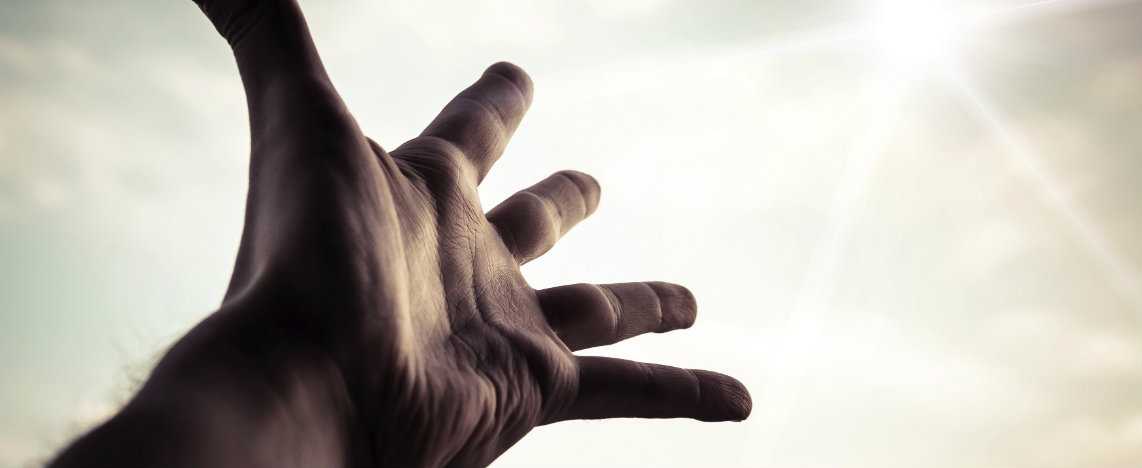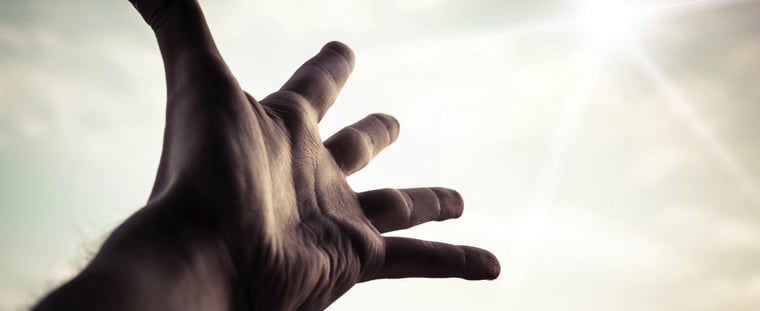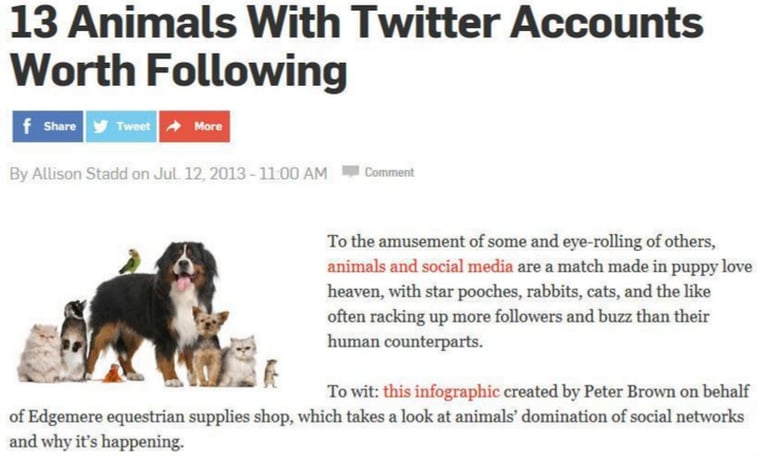
Paid Media: How to Get Your Content More Reach

 Has your lack of social engagement got you down?
Has your lack of social engagement got you down?
There’s no denying things got a little tougher out there in the last couple of years. Many people are posting a lot of content to social channels.
This doesn't mean you can’t throw a Hail Mary pass and get a win here and there, but remember you are competing with everybody and their dog—sometimes literally.

No joke - this article via SocialTimes.
Don't worry, there are still ways to stand out. But the advantages of paid media are hard to ignore. You can get some serious traction by investing into more reach.
Let's talk about how you can increase your content’s visibility by leveraging paid media.
Make Sure You Know Your Audience
With any paid media, you should have a pretty good handle on your target customer profile, otherwise you could end up wasting valuable resources on getting your messaging right.
As an inbound marketer, this is a well you’ll keep drawing from, so do your best to make the information easy to access and use.
B2C? Get Your Twitter On!
A B2C company should definitely consider leveraging Twitter to boost the reach of their content if it is the right fit for your audience. You can use it to generate more traffic to your posts, grow your email list, and even drive leads to your opt-ins.
There are four types of campaigns you can run on Twitter:
- Engagement tweets: This is where you put money into a standard tweet to boost its visibility. Boosting a tweet that's already getting results can be worthwhile.
- Website clicks/conversion campaigns: Drive traffic to your website with a specific call-to-action.
- Followers campaign: Use this only when you're trying to grow your following.
- Lead campaigns: Use this to generate leads, similar to website/clicks conversion campaigns.
Facebook: Also Great For B2C & Hyper-Local Consumers
Facebook is one of the most effective ad platforms for driving referral traffic. It has some effective targeting options, and you get impressive reach for the budget, too.
From a broader perspective, there are two basic campaign types on Facebook:
- Sponsored posts appear in newsfeeds of target audience members. Good for driving engagement and awareness, or for promoting an event.
- Facebook ads appear in newsfeeds or in the right-hand column of any page on Facebook. A great tool for getting more page "likes" across a bigger audience.
LinkedIn? Obviously B2B
LinkedIn is a professional network, and many users would prefer to keep it that way. So if you're targeting specific audiences in the professional and executive realm, you've found the motherload. LinkedIn has many filtering options, making it easy to get a high ROI.
There are four LinkedIn campaign types you should be aware of:
- Display ads have text, images or video that run on the Google AdClick platform.
- Sponsored updates allow you to pay to boost a piece of content that has already been published. You can either create a new post to be amplified, or use a specific post that has performed well.
- Text ads feature text and a thumbnail. These also run on the Google AdClick platform.
- Sponsored InMail is the equivalent of a private message; you can send targeted messages directly to the inboxes of specific LinkedIn users.
Instagram: Great For B2C Brands & Targeting Millennials
Instagram is all about sharing images. By taking advantage of the ad platform, you can drive traffic to your website, promote mobile app installs, drive call-to-action results and create mass awareness.
Here's some good news if you're already using Facebook: Content distribution works exactly the same as Facebook, because the social media giant owns this channel.
These are the types of ads you can use on Instagram:
- Photo ads: ads with visual imagery—pretty standard stuff.
- Video ads: create videos up to 30 seconds.
- Carousel ads: ads featuring multiple images that tell a story. Users can swipe through the images.
YouTube For Both B2B & B2C
YouTube Advertising depends on the topic. Since you can create relevant video content to appeal to your customer, it's a great platform to leverage. Plus, it's the second largest search engine, second only to Google.
These campaign types can be used to boost the presence of your content on YouTube:
- In-stream ads play before or during a YouTube partner video. These are popular among big brands, though it's good to keep in mind that they can be skipped by the viewer after 5 seconds. Advertisers only pay after 30 or more seconds of viewing, however.
- In-slate ads play at the beginning of videos, and can have run times upward of 10 minutes or more. You only pay when the ad is watched.
- In-search ads are located in the upper-right corner of video results pages. Again, you only pay when your ad is viewed.
- In-display ads play on embedded YouTube content on third-party sites, and you only pay when they are watched.
Boosting Your Content With Paid Media
When it comes to paid media, some experimentation is par for the course. Maybe you know your audience, but your copy and messaging needs some tweaking. Maybe it's the other way around. Maybe you just need to find "your" platform.
Ultimately, social ads tend to be flexible. Most channels let you get specific with your targeting and set your daily budget. This means there isn't a huge amount of risk involved in trial and error.
And let's not lose sight of the benefit here: You can amplify your content in a major way using paid media. Ads and organic search traffic are a killer combo.
Now you have a better idea of the tools available to you and the specific audiences you can reach using Facebook, Twitter, LinkedIn, Instagram and YouTube. You're ready to start initiating campaigns to boost your content.
Learn more about getting your content more reach through social media—get your free copy of The Guide to Paid Media.




